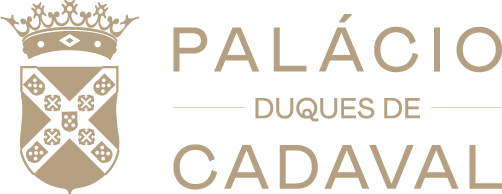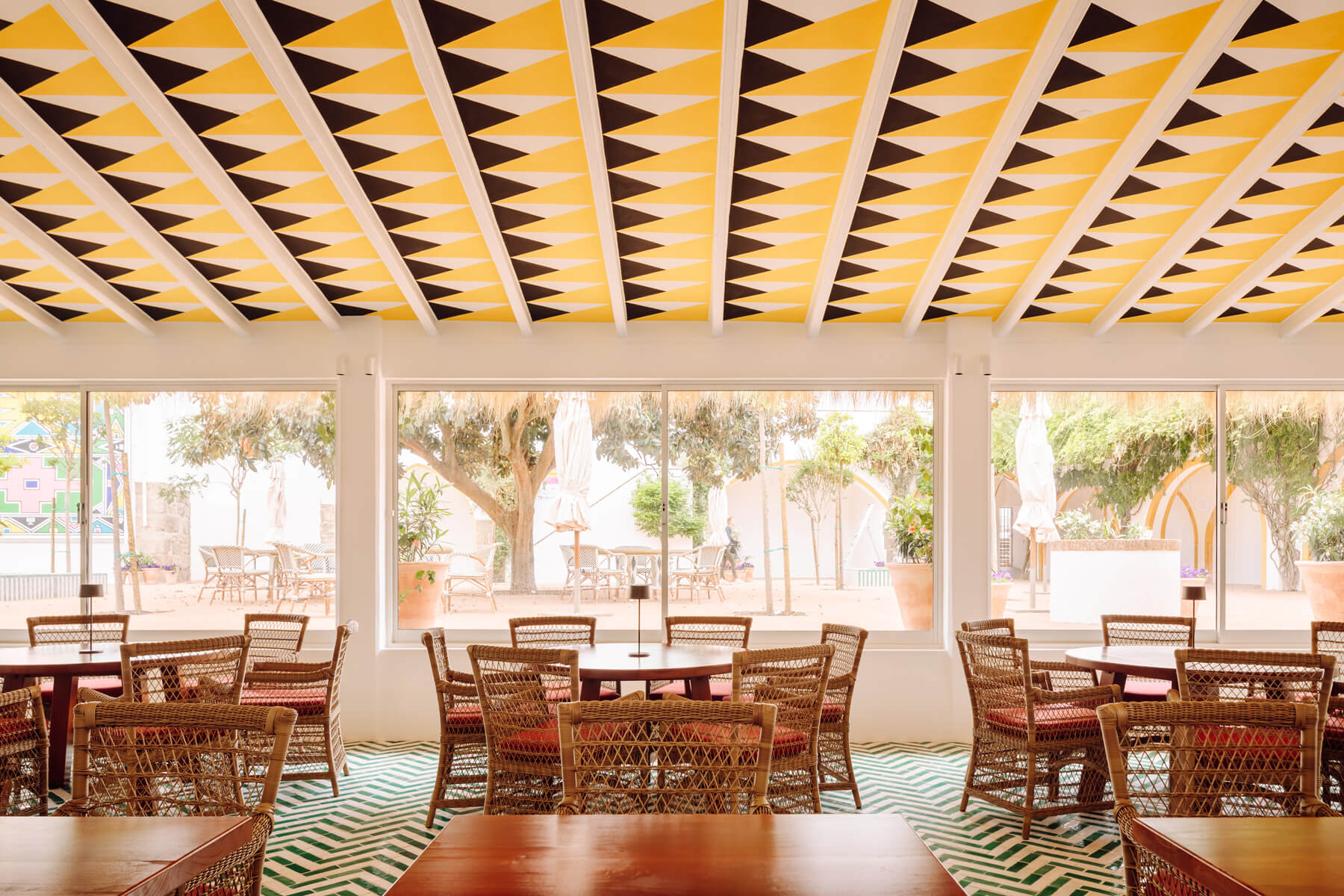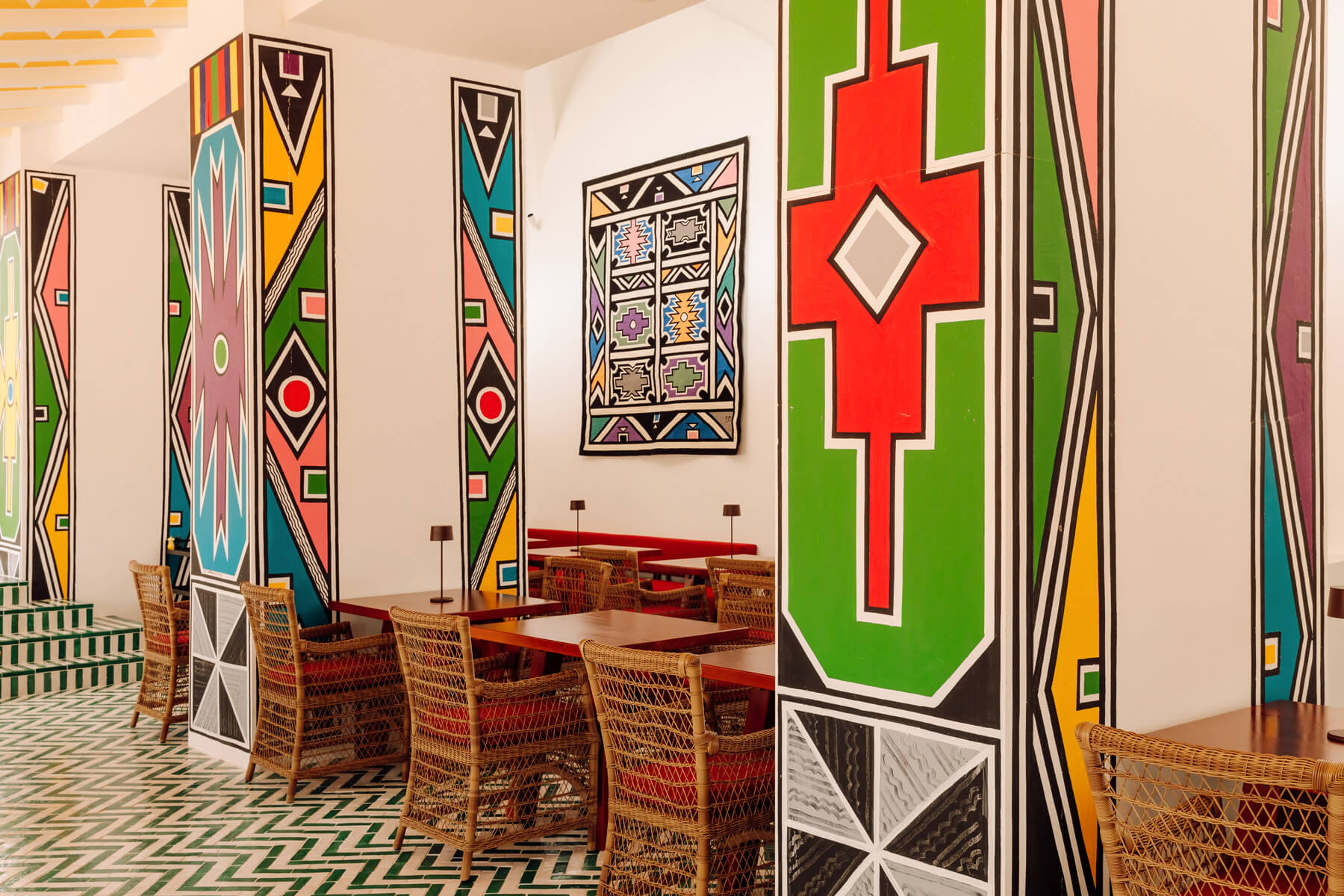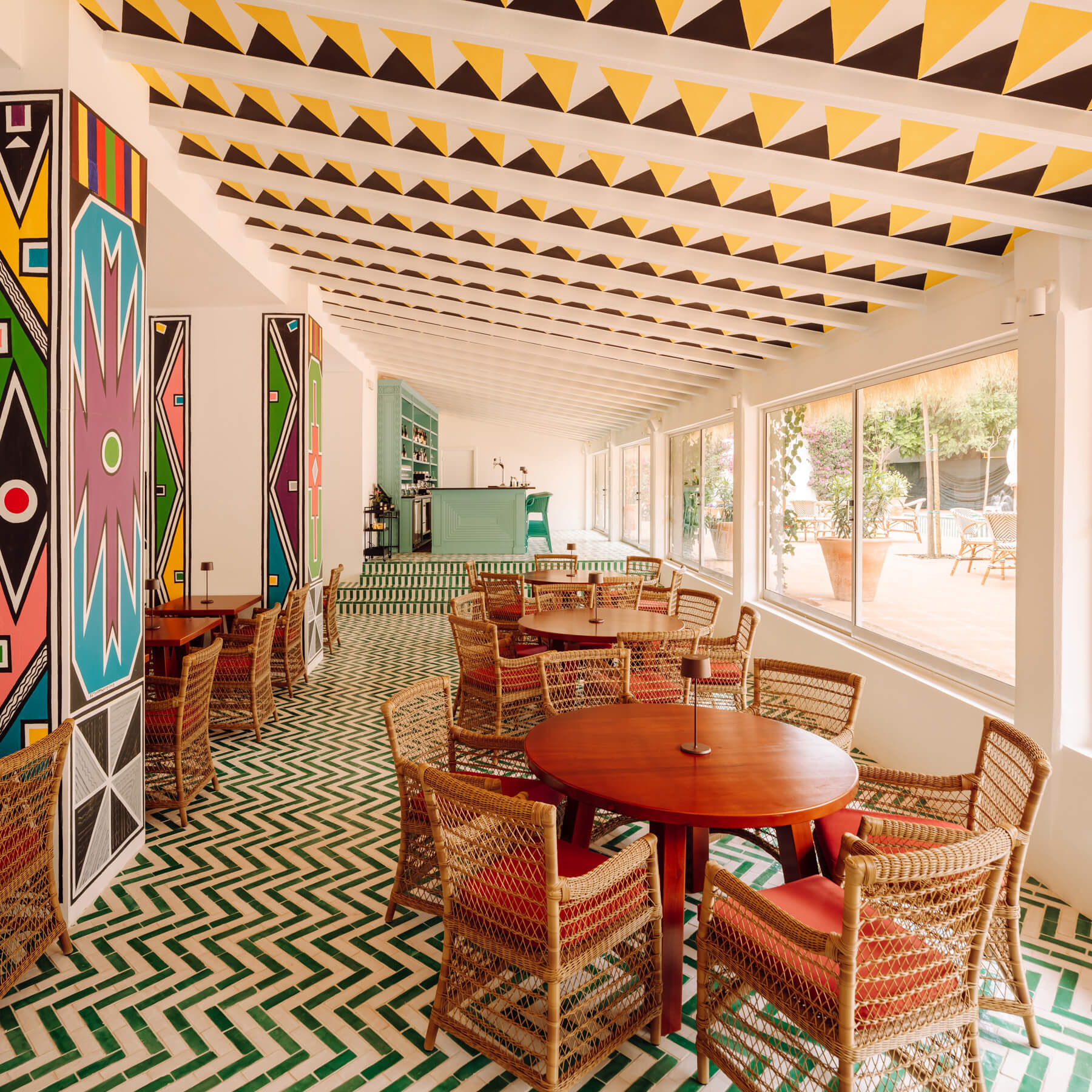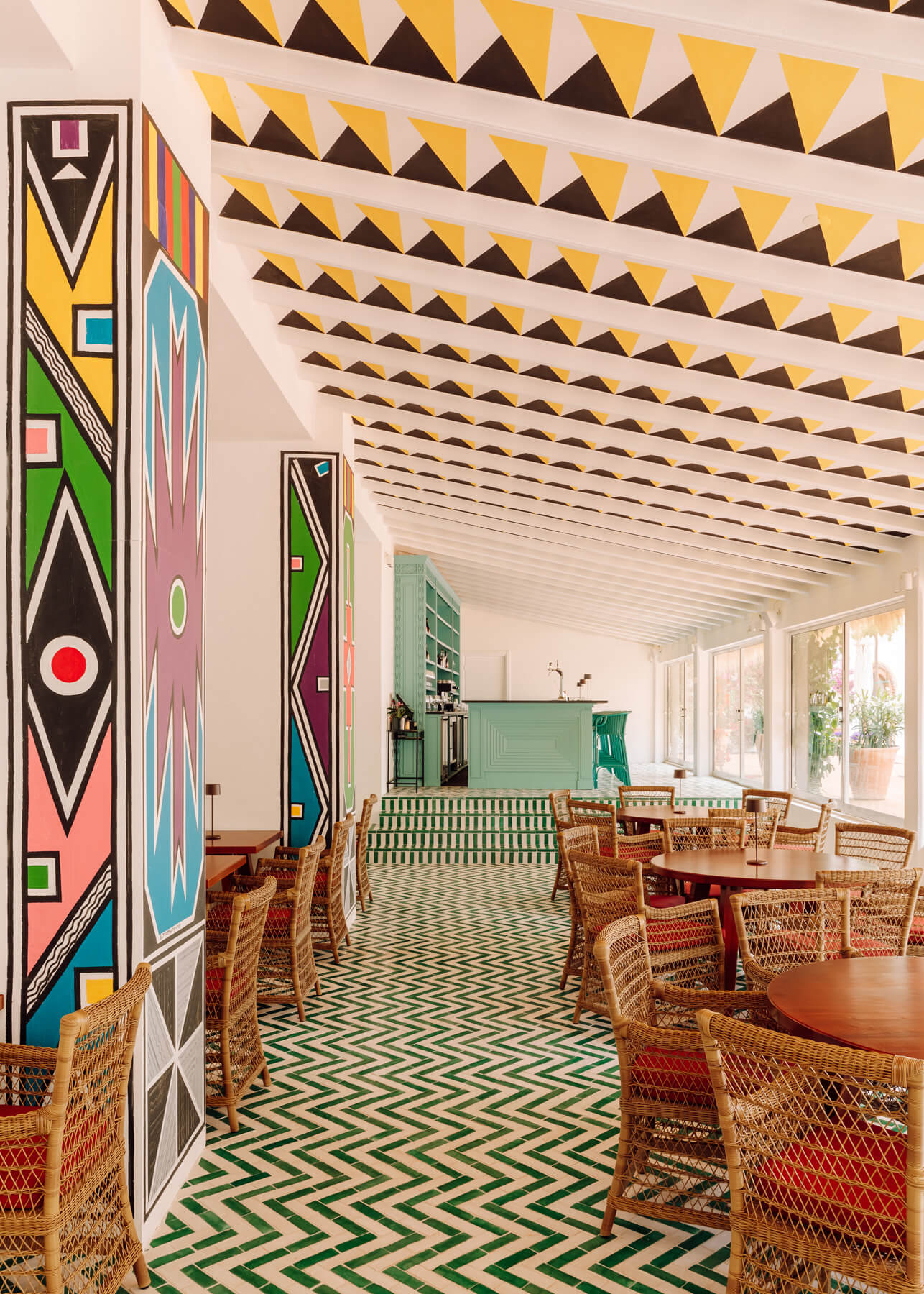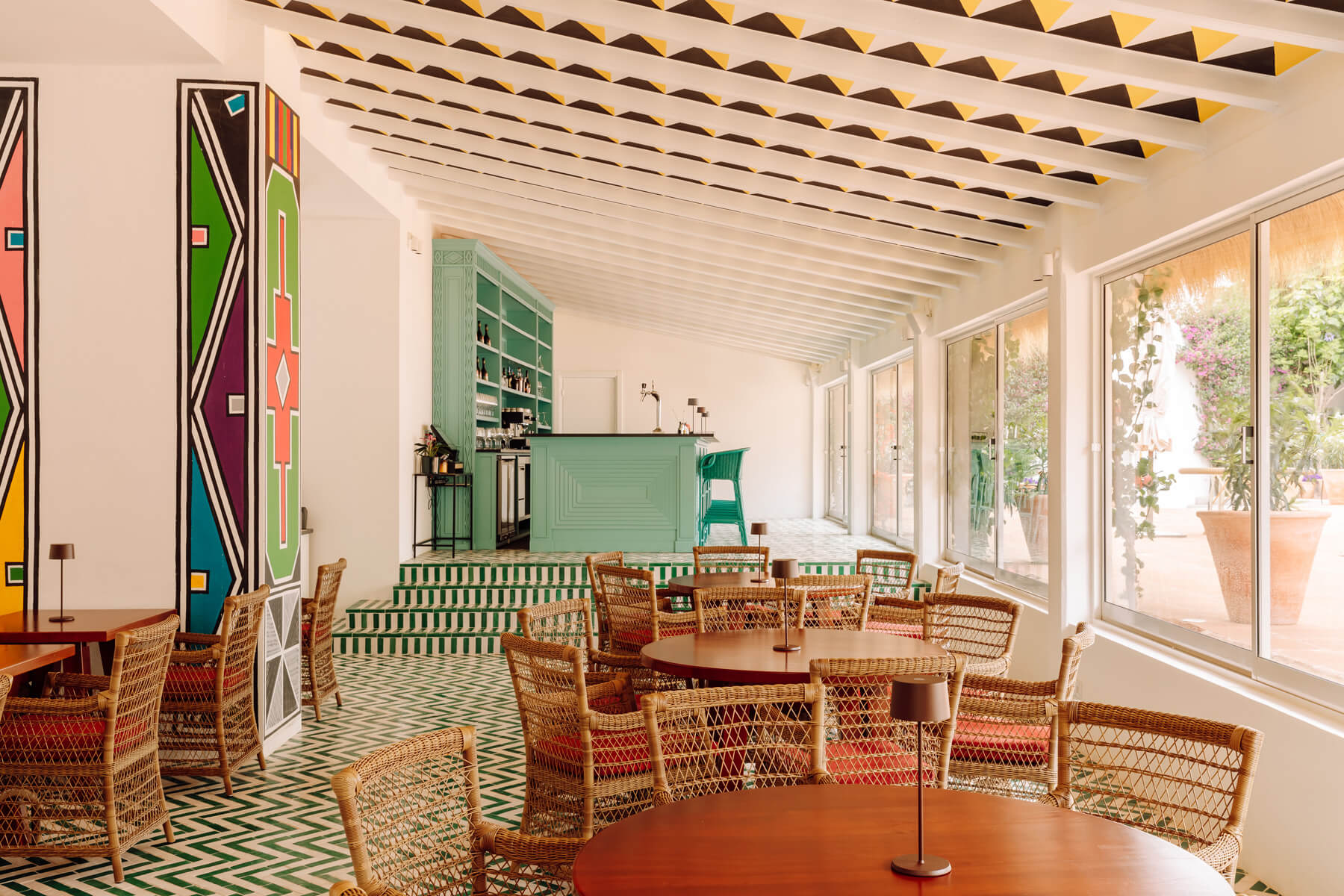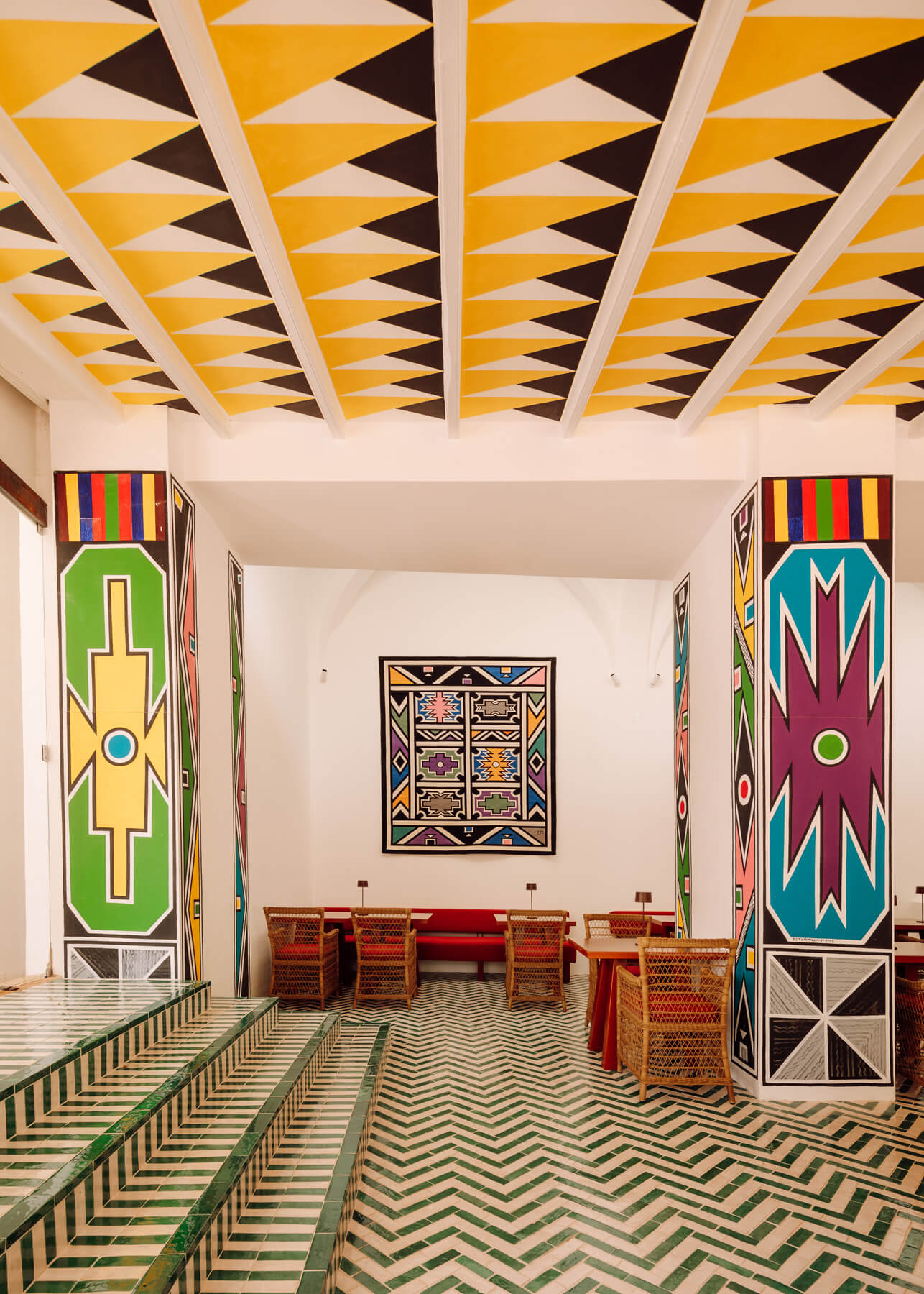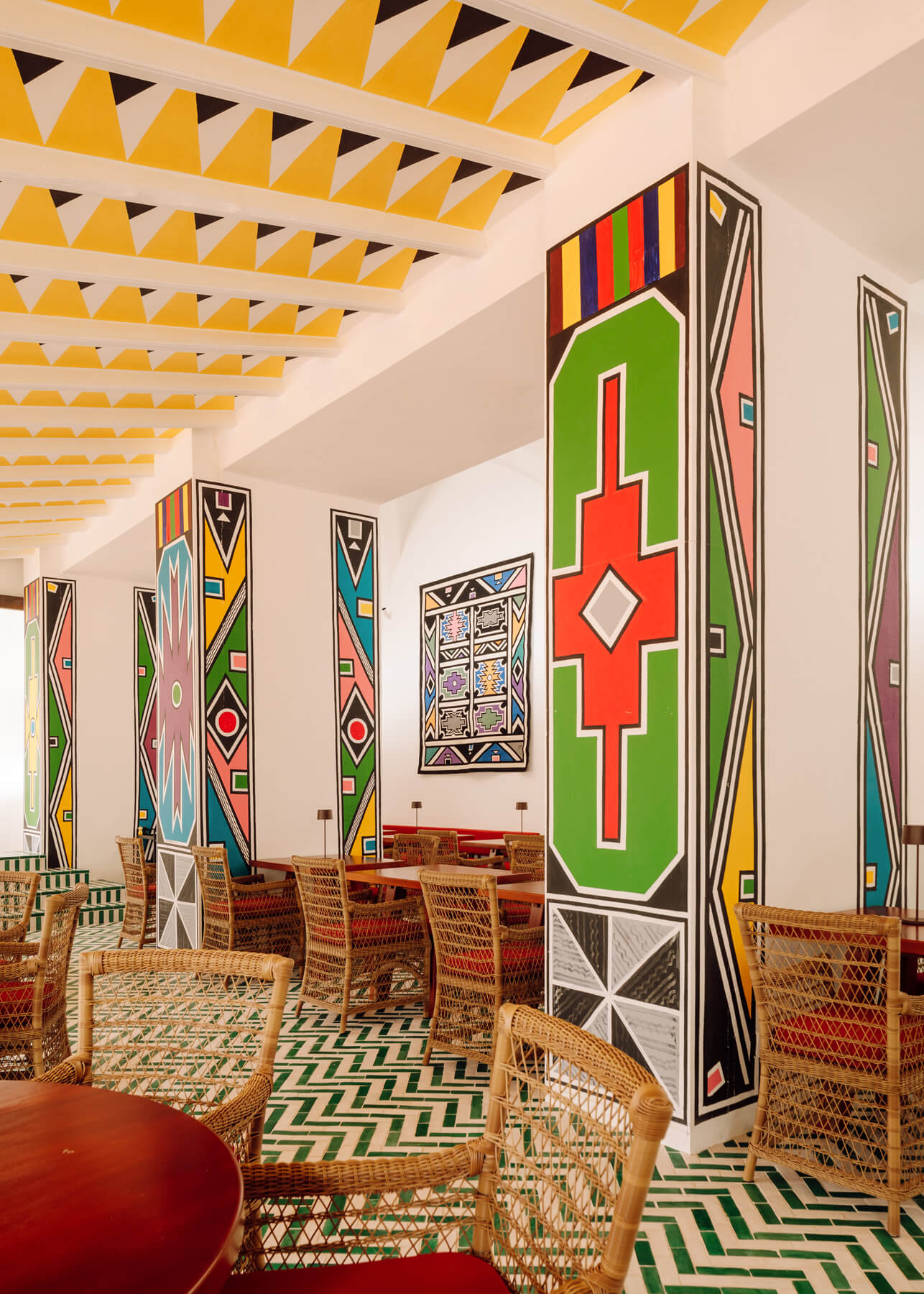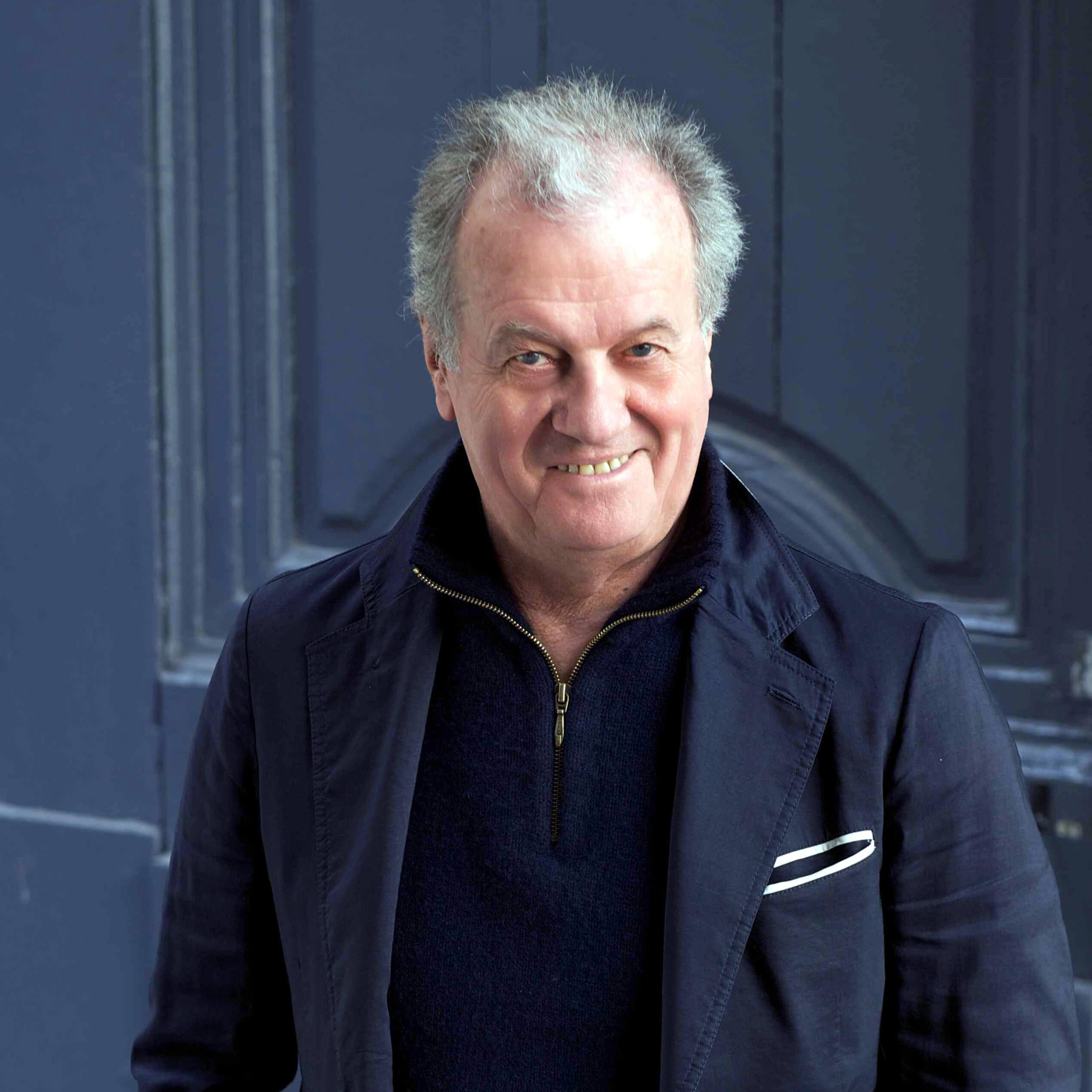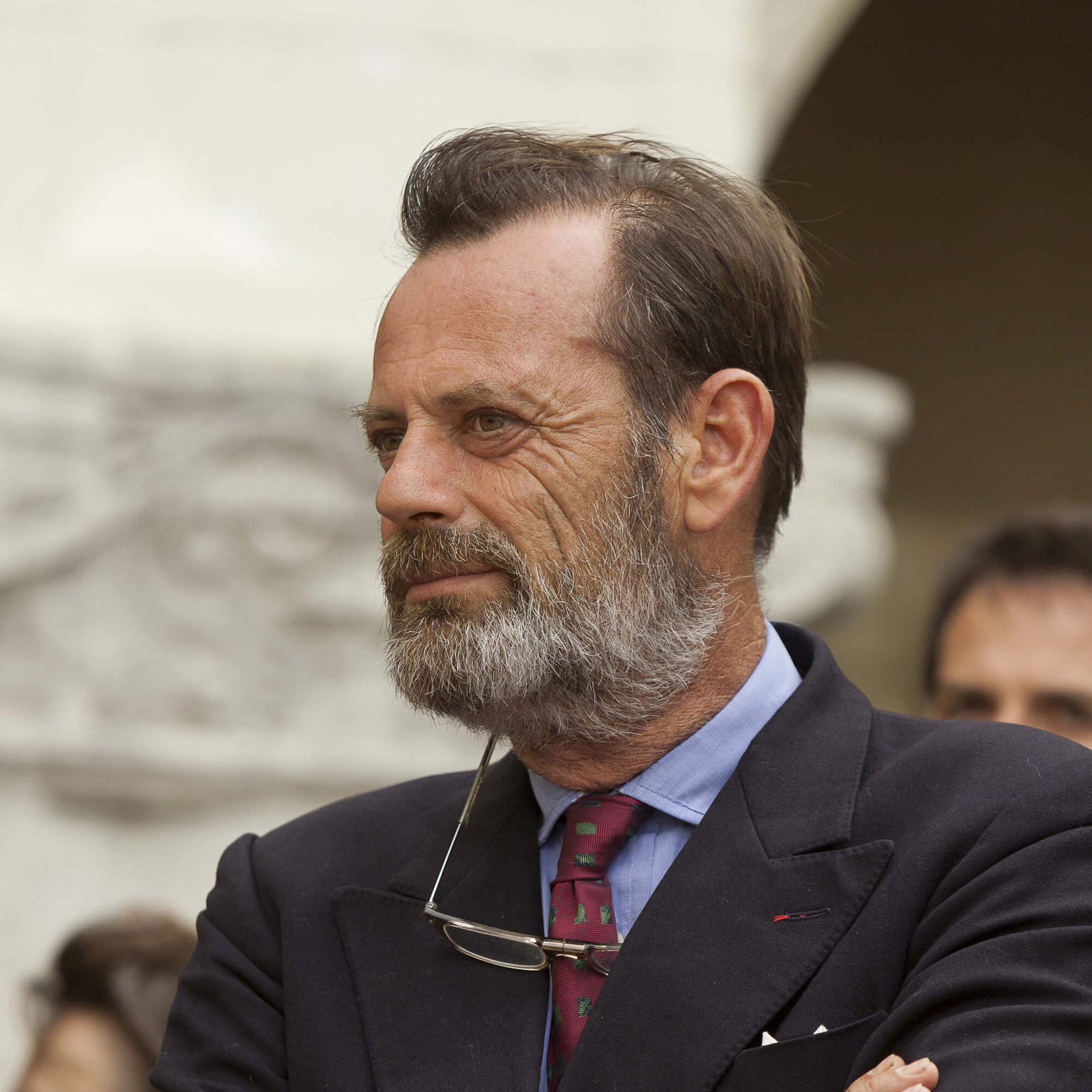Cavalariça Restaurant
The extensive palace renovation programme included the palace restaurant and the esplanade, one of the property’s most iconic spaces. Backed by the Cadaval family, the restaurant interior welcomed the creative input of renowned designer Jacques Grange, while the courtyard was reimagined, in a clear nod to its Arabic influences, by landscape designer Louis Benech.
The inspiration behind the restaurant renovation, guiding the designs from the outset, was South African artist Esther Mahlangu, famed Ndebele artist who, as part of the ‘African Passions’ exhibition held at the palace in 2018, was invited to paint the columns of the restaurant, a frieze over the archway and mural inside the courtyard. Esther’s brightly coloured geometric artwork set the tone for Jacques Grange, who made it his key motivation to highlight the artwork of the African tribal artist. Under Benech’s guidance the courtyard takes on an Andalusian feel, with newly installed square fountains, geometrically planted orange trees, and leafy climbers. Inside, Grange drew on Esther’s bright palette and geometric shapes, to produce an explosion of colours, highlighted by hand-painted black and yellow ceiling patterns, zigzag mosaic flooring and bright turquoise bar area.
The successful renovation clears the way for the re-opening of the restaurant, with the palace inviting the partners behind Cavalariça, which has two further restaurants in Lisbon and Comporta, to take up the reins. Partners Christopher Morrel, Bruno Caseiro and Filipa Gonçalves jumped at the chance to open their third restaurant in this singular and prestigious historic setting.
For reservations and more information: www.cavalarica.com
Download press release.
